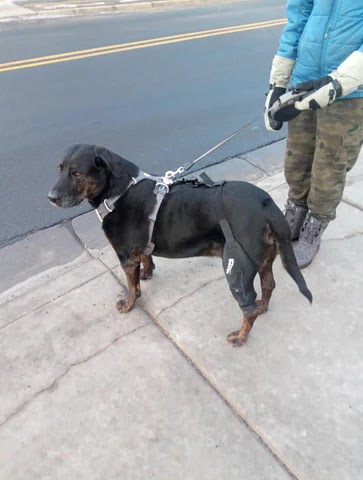The
Role of Dog Hip Braces
Introduction:
Hip dysplasia is a common condition in dogs that affects
the hip joints, leading to pain, discomfort, and reduced mobility. It is
characterized by abnormal development of the hip joint, resulting in improper
alignment and fit between the femur (thigh bone) and the acetabulum (hip
socket). One of the effective treatment options for managing hip dysplasia in dogs is the use of dog
hip braces. In this article, we will explore the role of dog hip braces in managing hip dysplasia, their benefits, and how they can
improve the quality of life for affected dogs.
Understanding
Hip Dysplasia in Dogs:
Hip dysplasia is a genetic condition that can
affect dogs of various breeds and sizes. It typically develops during the
growth phase of a dog's life and can result in varying degrees of pain and
mobility issues. The condition can be caused by factors such as genetics, rapid
growth, obesity, and certain environmental factors.
Benefits
of Dog Hip Braces:
Pain Management: Dog
hip braces are designed to provide support and stability to the hip joint,
reducing pain and discomfort associated with hip dysplasia. The brace helps to
distribute the weight-bearing forces evenly across the joint, relieving
pressure on the affected area.
Improved Mobility: By stabilizing the hip joint, dog hip braces
can help improve a dog's mobility. The brace restricts excessive movement and
provides support, allowing the dog to move more comfortably and with reduced
pain.
Joint Alignment: Dog
hip braces help promote proper alignment of the hip joint, preventing
further deterioration and reducing the risk of secondary issues such as
osteoarthritis. The brace encourages proper joint positioning, minimizing joint
stress and wear.
Muscle Support: Hip dysplasia can lead to muscle weakness and
atrophy in the hind limbs. Dog hip braces provide additional support to the
muscles around the hip joint, helping to improve muscle tone and strength.
Post-Surgery Recovery: In cases where surgical intervention is
required for severe hip dysplasia, dog
hip braces can aid in the post-surgery recovery process. The brace provides
stability and support, assisting in the healing of the surgical site and
promoting a faster recovery.
Types
of Dog Hip Braces:
There are different types of dog hip braces available, including
wrap-around braces, hip harnesses,
and custom-fitted braces. The choice of brace depends on the severity of the
hip dysplasia, the specific needs of the dog, and the recommendations of a
veterinarian or orthopedic specialist.
Conclusion:
Dog hip braces play a crucial role in managing hip dysplasia and
improving the quality of life for affected dogs. By providing support, pain
relief, and improved mobility, these braces offer a non-invasive treatment
option that can help dogs with hip dysplasia lead more comfortable and active
lives. If you suspect your dog may have hip dysplasia, it is essential to
consult with a veterinarian or a specialist who can assess the condition and
recommend appropriate treatment, which may include the use of a dog hip brace.










